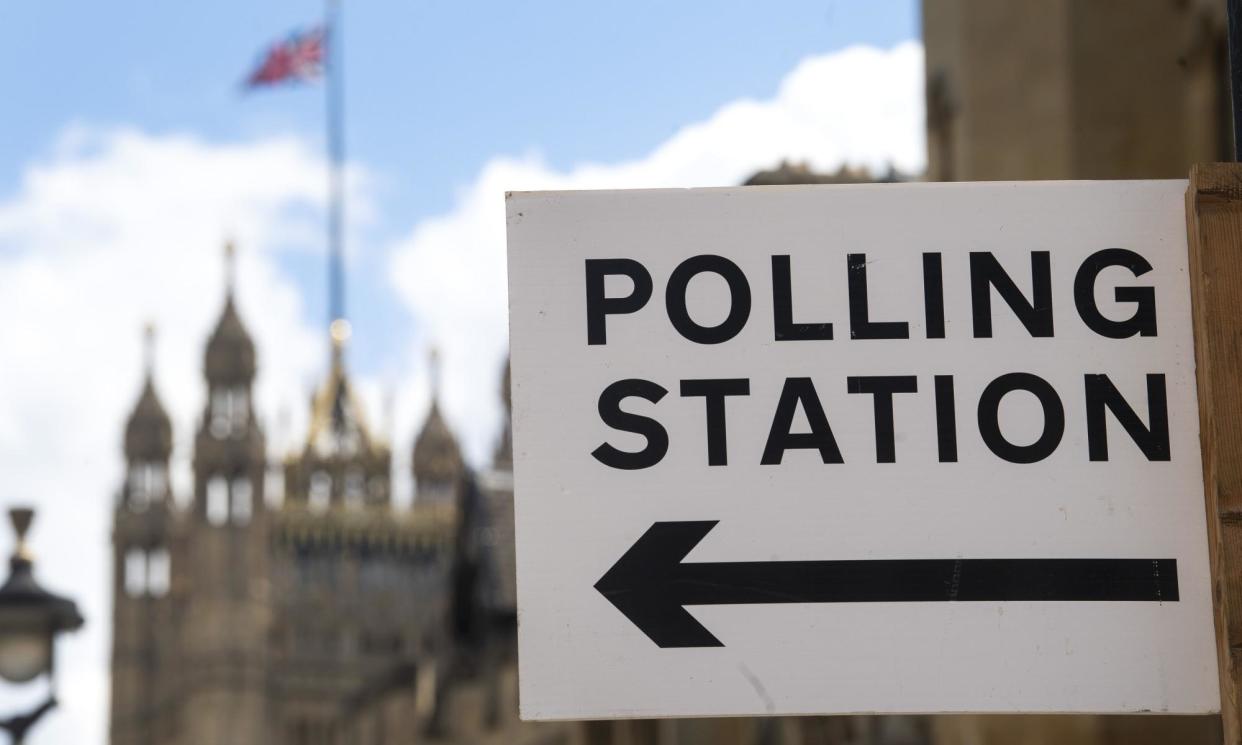Election loss, rout, or wipeout? Three Tory outcomes predicted by the polls

So-called MRP polls, which use large-scale polling data to extrapolate individual seat tallies, have become something of an obsession in UK politics since an early version by YouGov predicted 2017’s hung parliament, while other surveys were tipping an easy Conservative win.
So popular are MRPs, an acronym for a very technical approach known as multilevel regression and post-stratification, that three were published on a single day this week. All gave pretty different results, particularly when it came to the fate of the Tories.
So what would these various scenarios, if replicated on 4 July, mean for the Conservatives and their future, particularly in terms of personalities and ideology?
Loss: More in Common, 155 Tory MPs
Amazing as it might sound were you to tell this to a Conservative MP in mid-2021, when the Tories were 15-plus points ahead of Labour in polls, quite a lot of party officials and candidates would probably accept this result if it were offered now: a Labour majority of 162.
Even with this scenario there would be some high-profile casualties – understandably, given it is a cull of 210 Tories from the 2019 election. The MRP extrapolation predicts Jeremy Hunt, the chancellor, would lose his seat to the Lib Dems, with fellow cabinet ministers Grant Shapps and Mark Harper among those ousted by Labour.
What would the remaining parliamentary party look like? There are many imponderables, not least the influx of new MPs, with dozens of incumbent Tories having stepped down. It would, at least, be the opposition by some distance – under this model the Lib Dems would have 50 MPs – and there would be plenty of big beasts to compete for the leadership were Rishi Sunak to step down or be challenged.
Jostling for this race has already begun, with Kemi Badenoch, Priti Patel, Suella Braverman and Robert Jenrick expected to try their luck from the right of the party.
For the centrists, while Shapps would be gone, the home secretary, James Cleverly, would still be around, as would Penny Mordaunt, whose Portsmouth seat is seen as very vulnerable to Labour. In brief: expect a big fight.
Rout: YouGov, 108 Tory MPs
We are now venturing into fevered-nightmare territory for Tory MPs. If not approaching a Canada 1993-style complete wipeout, this would still be the Tories’ lowest-ever Commons tally. The Labour majority of 200 would be greater than that won by Tony Blair in 1997.
The list of top Conservatives losing their seats would also increase, taking in Gillian Keegan, the education secretary, who would lose in Chichester to the Lib Dems, forecast by YouGov to gain 67 seats.
Senior Tories toppled by Labour would include Mordaunt, as well as Shapps and Harper, plus Mel Stride, the work and pensions secretary, with Cleverly’s seat almost too close to call.
If the home secretary joined Mordaunt and Shapps in being ousted, that would leave the ranks of senior centrist Tories quite thin, perhaps needing someone like Tom Tugendhat to step up – which he may well do anyway.
Another key change in this scenario is Reform UK winning five seats, among them Nigel Farage in Clacton. Would a decimated and divided Conservative party be vulnerable to a hostile takeover by Farage? More moderate Tories would loathe this, but might end up being powerless to stop it.
Wipeout: Savanta, 53 Tory MPs
Yes, the Conservative parliamentary party would still exist, but it could comfortably fit into one of the larger Commons committee rooms. As a proportional decline from 2019, this would be more or less the same as the Lib Dems suffered in the 2015 elections, renowned as perhaps the most brutal electoral punishment beating in modern UK politics.
The Labour majority of 382 would be, in effect, off the psephological charts, not far short of double the previously biggest single-party majority in comparable history, the 209 won by Stanley Baldwin’s Conservatives in 1924.
Savanta’s list of senior Conservatives who could lose their seats under this scenario is, as you’d expect, eye-popping, taking in a series of MPs from the right of the party who occupy what would normally be seen as ultra-safe seats.
Among its names are Oliver Dowden, the deputy prime minister, and Richard Holden, whose 180-mile flit from his North West Durham seat, which vanished under boundary changes, to Basildon and Billericay in Essex, would be rewarded with a loss to Labour.
Under this scenario, Braverman and Badenoch would be vulnerable – and even Sunak himself, who recorded a 27,000-plus majority in his Richmond, Yorkshire seat in 2019.
What would be left for the stragglers in this post-apocalyptic Tory landscape? Whoever took over would, at least, be opposition leader under this model, which predicts a Lib Dem total of 50. They would, however, be facing a Labour parliamentary party almost 10 times bigger, numbering 516.
Who would emerge as leader from this wreckage? It is almost impossible to tell, not least because it is hard to know how many viable candidates would even want to take on this most thankless challenge.
One curiosity of the Savanta MRP is that it predicts zero Reform seats, even for Farage, meaning that if the Conservatives did want to make him their leader, they would need to find a seat for him first, and one he had a chance of winning.
A final note
MRP polling can be hugely informative, but it is heavily caveated, not least by the pollsters themselves, all of whom emphasise that many dozens of seats are too close to call, meaning the totals could end up being quite different.
Those who put together the polls also stress that, as with all algorithm-based models, the numbers you get depend not just on the raw polling results, but also the complex models used to crunch the data. And, as with all polls, it is a snapshot, not a prediction.

 Yahoo News
Yahoo News 
